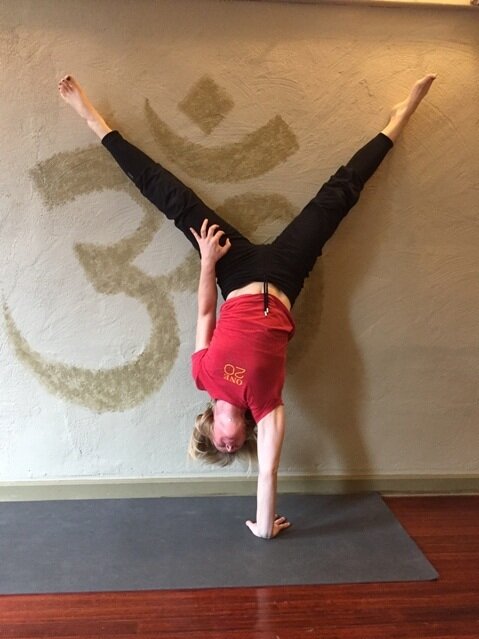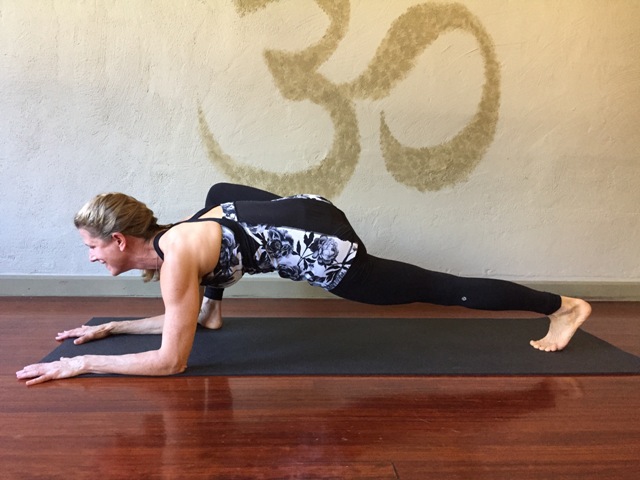In this day and age of online subscriptions, one of the things that differentiates a live yoga class from a virtual one is the attention of a teacher. Maintaining a regular and consistent yoga practice is important and you may have to do that by following classes online or by practicing by yourself. But there is something to be said for practicing under the eyes and guidance of a skillful teacher.
We all have blind spots to our own bodies and practices and there probably are poses that we avoid when no one is watching. But, in order to keep your practice balanced, it is as important to know when you are out of alignment as it is to work on the poses you don’t like.
Much as I love to practice on my own, I also enjoy the energy of practicing in a group. When I take a class, I like the attention of a teacher. I am not as interested in a teacher who is practicing on her own mat. I like the encouragement, correction and insight you can get from the perspective of someone else. I like the “Aha!” moment of a skillful assist that changes a pose for me like turning on a light in a dark room.
That being said, assisting in yoga classes is a controversial topic. As much as I like being assisted, they can also be harmful. I have been injured while being assisted. There are some things you can do to protect yourself and your students from being injured by an assist.
Here are five keys points for assisting in yoga classes:
Getting and giving permission.
Not everyone wants to be adjusted all of the time. Sometimes students have physical issues that they haven’t shared with you and it might just be that area of the body you are about to hone in on. Nationally known yoga teacher Judith Hanson Lasater asks permission every single time she assists someone. If someone is willing to be assisted, their bodies will be more open and receptive to an assist. As a student, it is important to set your own boundaries. It is not fun to be volunteered for something you are not ready for. As a teacher, be prepared for someone to just say no to one of your skillful assists.
Have clear lines of communication.
This is separate from asking permission. It is also important to know how the assist feels while it is happening. Is the pressure to much, too little, in the wrong spot? You need to be able to communicate how things feel as they are happening. Teachers, be sensitive to different bodies experience of pressure. Students, don’t be afraid to speak up if something doesn’t feel good.
I was once in a large workshop setting. We were assisting each other in a standing split. The room was full and very noisy. My head was down near my knees and my partner was standing above me. As she pushed on my leg which was up in the air, she couldn’t hear me say it was too much. I literally had to punch her in the leg to get her attention to let go. By that time my hamstring was strained.
Don’t make any assumptions.
As a teacher, don’t assume that your student’s body can go where you envision it going. As a student, don’t assume that your teacher knows what your body can do. While it is nice to think positive thoughts and to believe in the power of positive thinking, changes in the body usually happen over time, not in an instant.
I was once in a workshop where a teacher was encouraging people to kick up into handstand in the middle of the room. The teacher asked this one student to volunteer to demonstrate how to do it. The student was reluctant, but the teacher insisted that the student could do it. The student did the handstand and it ended well. I asked the student afterwards if she felt peer pressure to do the pose in front of everyone. She admitted that she did, but she said, “The teacher knew my body and knew I could do it, so I trusted the teacher.” Fortunately that trust was not misplaced.
While there is the power of encouragement and anything is possible, it doesn’t always work out that way. As a teacher, make sure you are not putting anyone on the spot and forcing them to succumb to peer pressure. As a student, don’t give your power away to anyone else. In my classes I see a lot of students each week. Some of them I know well, but I never know exactly how someone is feeling inside that day. And, quite honestly, I don’t always remember everyone’s trick knee, herniated disk or sprained wrist.
Keep your ego out of it
While I would like to be the teacher that “taught” a student how to do handstand, wheel, split or any other pose, it is really the student’s process and the accumulation of their practice and work of all of their teachers. As a student, I might want the teacher to show me the “secret” to getting a pose. Neither I nor the student can force our way into a pose, by self effort or an overly aggressive assist. It would be like prying open a rose bud to force the flower to bloom. Often the more badly we want something, the more it eludes us. Practice takes time, patience and a curious sense of exploration.
Learning massage has been a great tool in helping me know how to adjust and assist my students. One of the most important skills massage has taught me is to how important it is to always move with the breath, both theirs and mine. Feeling the movement of the breath also helps you feel where there is resistance in the body.
Know your alignment
Adjusting and assisting is about helping the body move towards better alignment. If you are not sure what the alignment is, you won’t know which direction to move towards. This is true for both the teacher and student.
You also have to know what the foundation of the pose looks like and start from there. There is no point assisting someone in a pose when the foundation is off. Sometimes fixing the foundation corrects other misalignments. If a student doesn’t know the proper foundation, they may also not have the proprioceptive sense to feel the rest of their body, either.
Approach each student as unique
There is no one size fits all to adjusting and assisting. I can’t teach my students “The Down Dog Assist” because there are many variations of how to assist in any pose. And the assist will be different for someone with tight hamstrings as opposed to restricted shoulder mobility.
Assisting is a skill that needs to be practiced, just like your yoga poses. In the beginning, it is important to get feedback. That is why I offer these workshops on assisting. You need to know: was the pressure too much, too little or just right? Was the direction of the pressure correct? Did I knock my student off balance? Does it feel better when I place my hands here or there? What does resistance feel like?
These six keys to safe assisting are all things you will get to experience and learn in my workshop in June. For the details click here.
I'm curious, as a student, do you like being assisted? As a teacher, do you feel comfortable assisting? (If not, consider signing up for my workshop.) Feel free to leave a comment and join in the conversation.




















